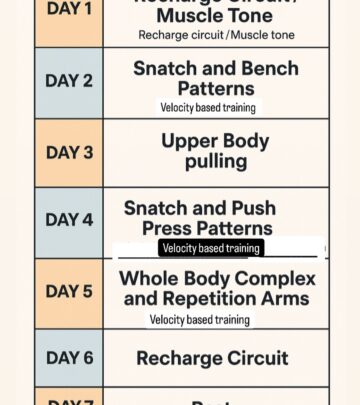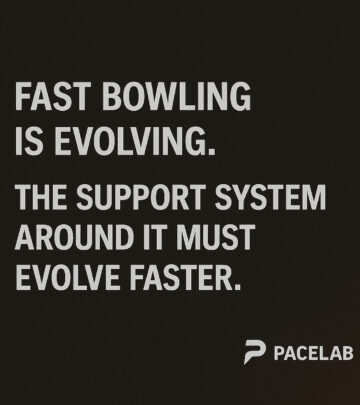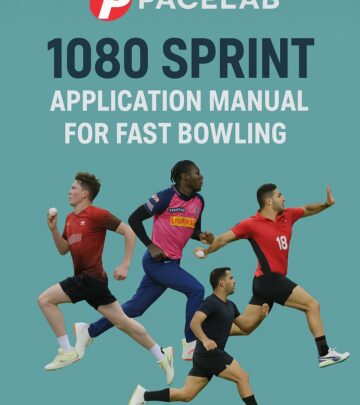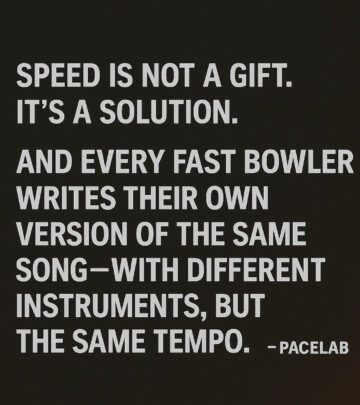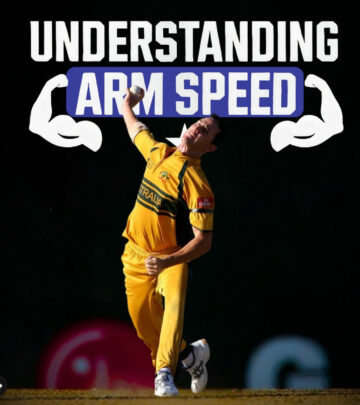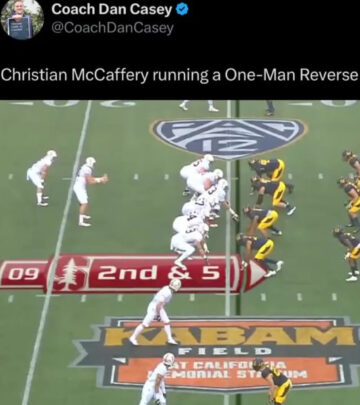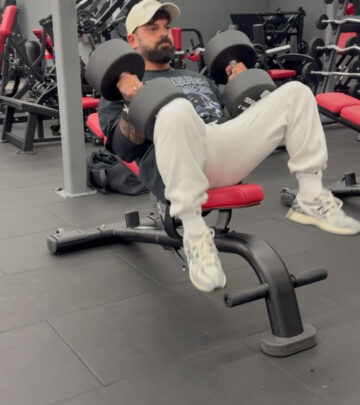Revolutionary Fast Bowling Load Management System
New model shifts focus from quantity to intensity, ensuring prime fast bowling performance
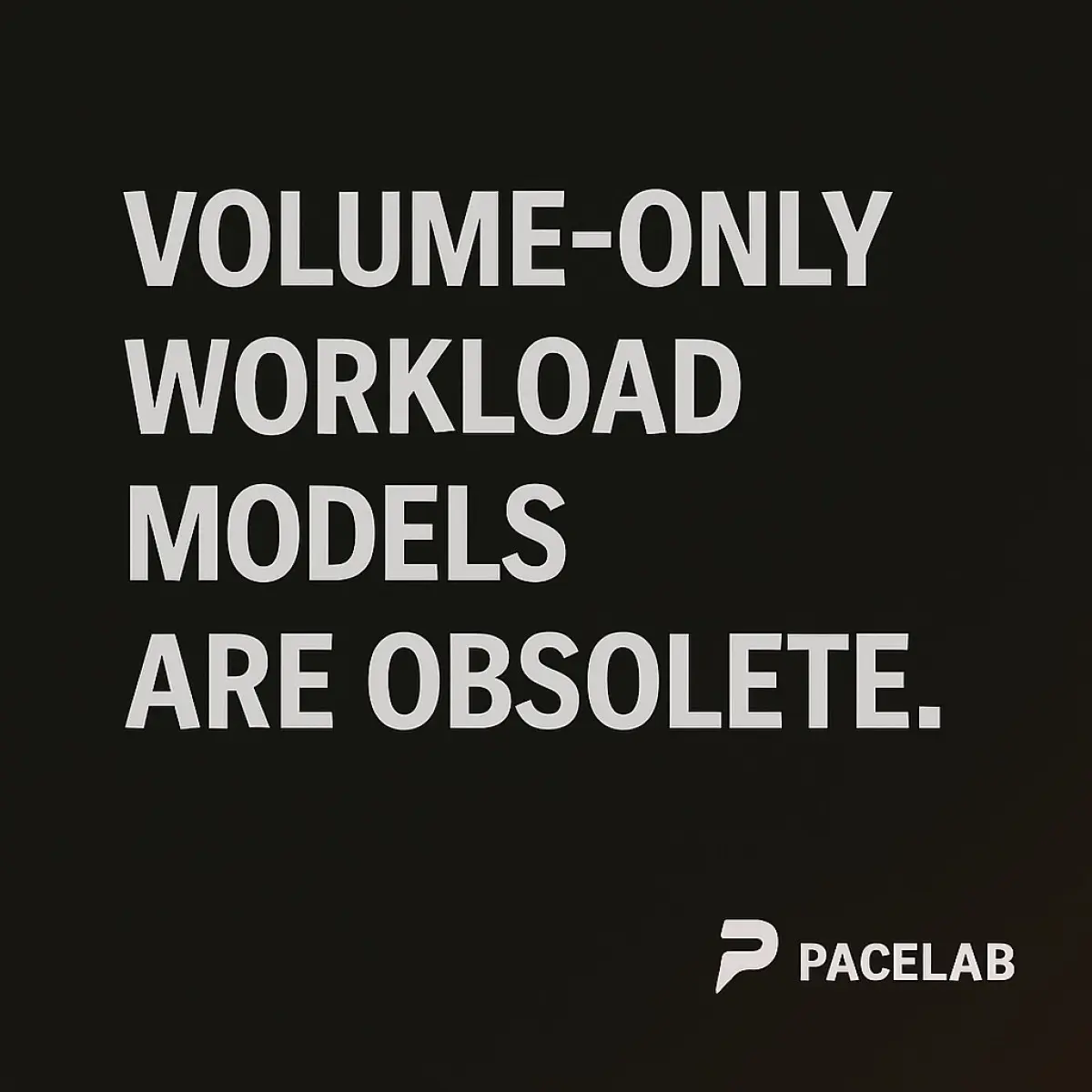
Image: Instagram
The fast-paced world of fast bowling is undergoing a seismic shift as traditional volume-only workload models are being challenged by an innovative approach that emphasizes intensity over sheer ball count. The Pacelab AREG system, powered by PARMS and backed by the BS:PL Proxy, is spearheading this revolution by offering coaches and players a comprehensive, individualized model for managing bowling loads. In a recent post that has set social media abuzz, the message is clear: it’s not how many balls you bowl—it’s how hard each one hits your system.
Managing Fast Bowling Beyond Ball Count
For decades, fast bowling development has largely relied on counting deliveries, a method likened to measuring sprint training by footsteps rather than by speed. The underlying flaw is that it ignores the variable that truly matters: intensity. The Pacelab AREG system changes the game by zeroing in on the kinetic energy and biomechanical impact delivered with every ball. This model recognizes that every delivery has its unique force, demanding a more nuanced and science-backed approach to fast bowling performance and player longevity.
The system is designed to cater both to elite academies equipped with high-tech infrastructures and to club coaches who might rely more on instinct and close observation. The unifying lesson remains the same: training should focus on the quality of each delivery. As the post underscores, when it comes to fast bowling, repetitive volume does not equate to improved performance or reduced injury risk.
Precision Technology Meets Coaching Instinct
The Pacelab AREG system integrates advanced biomechanical analysis tools to quantify the stress placed on a bowler’s system with each delivery. Its comprehensive nature allows coaches to individualize training loads, ensuring that every athlete’s unique physical attributes and mechanics are considered. The message from the creators is emphatic—the traditional models that merely tally the number of balls bowled are outdated. Instead, reliable data on intensity helps in better predicting workload, reducing injury risks, and ultimately enhancing performance.
Steffan Jones, a well-known figure in fast bowling coaching circles, has also weighed in on the subject. With a reputation built on decades of practical coaching experience, Jones advocates for this progressive method. As seen in his recent Instagram content, he continues to push for a philosophy where fast bowling is approached as a full-body ballistic movement rather than a repetitive, drill-based task. His support adds a significant endorsement to the technical innovations introduced by Pacelab.
Embracing Science In Fast Bowling
The new workload model builds on the foundational principles that have long been discussed in fast bowling circles. Earlier posts from the Pacelab team emphasized the importance of biomechanics, sequencing, and the neuromuscular forces that underpin optimum bowling performance. By rejecting vague coaching cues and replacing them with precise, data-driven analysis, the AREG system ensures that every training session is tailored to the individual needs of the athlete.
In fact, past Instagram posts from the Pacelab community elaborate on this scientific approach. One detailed post outlined the three layers essential to fast bowling: the universal technical principles, individual peculiarities, and the mechanisms that connect them. This tiered evaluation not only distinguishes the method from traditional practices but also highlights why data and individualized performance metrics are indispensable in modern fast bowling coaching.
Protecting Young Talent Through Intelligent Load Management
An important aspect of this new system is its potential to safeguard the future of the young quick. With fast bowling being both physically demanding and technically intricate, inappropriate load management can lead to early burnout or chronic injuries. The Pacelab AREG system addresses these concerns head-on by ensuring that training loads are optimized based on intensity rather than volume. By doing so, it offers a blueprint for prolonging an athlete’s career while maximizing performance outputs.
The underlying philosophy is simple yet revolutionary: every delivery should be evaluated not just by its count, but by its impact on the player’s system. This shift in perspective is supported by robust data and biomechanical insights that are transforming how coaches design training regimens. The emphasis on quality over quantity is a recurring theme in fast bowling education, reflected in various detailed Instagram posts where experts discuss the science behind achieving optimal bowling speed and efficiency.
In an era where sports performance is increasingly driven by data and technology, the Pacelab AREG system stands as a testament to the power of combining scientific principles with coaching expertise. It encourages the community—whether you’re an elite academy or a grassroots club—to rethink traditional methods and embrace a more precise, individualized approach to fast bowling.
As the cricket world adapts to these advanced workload management systems, players and coaches alike can look forward to a future where performance is maximized, injuries are minimized, and the art of fast bowling is refined to new heights.
Read full bio of Joyce



